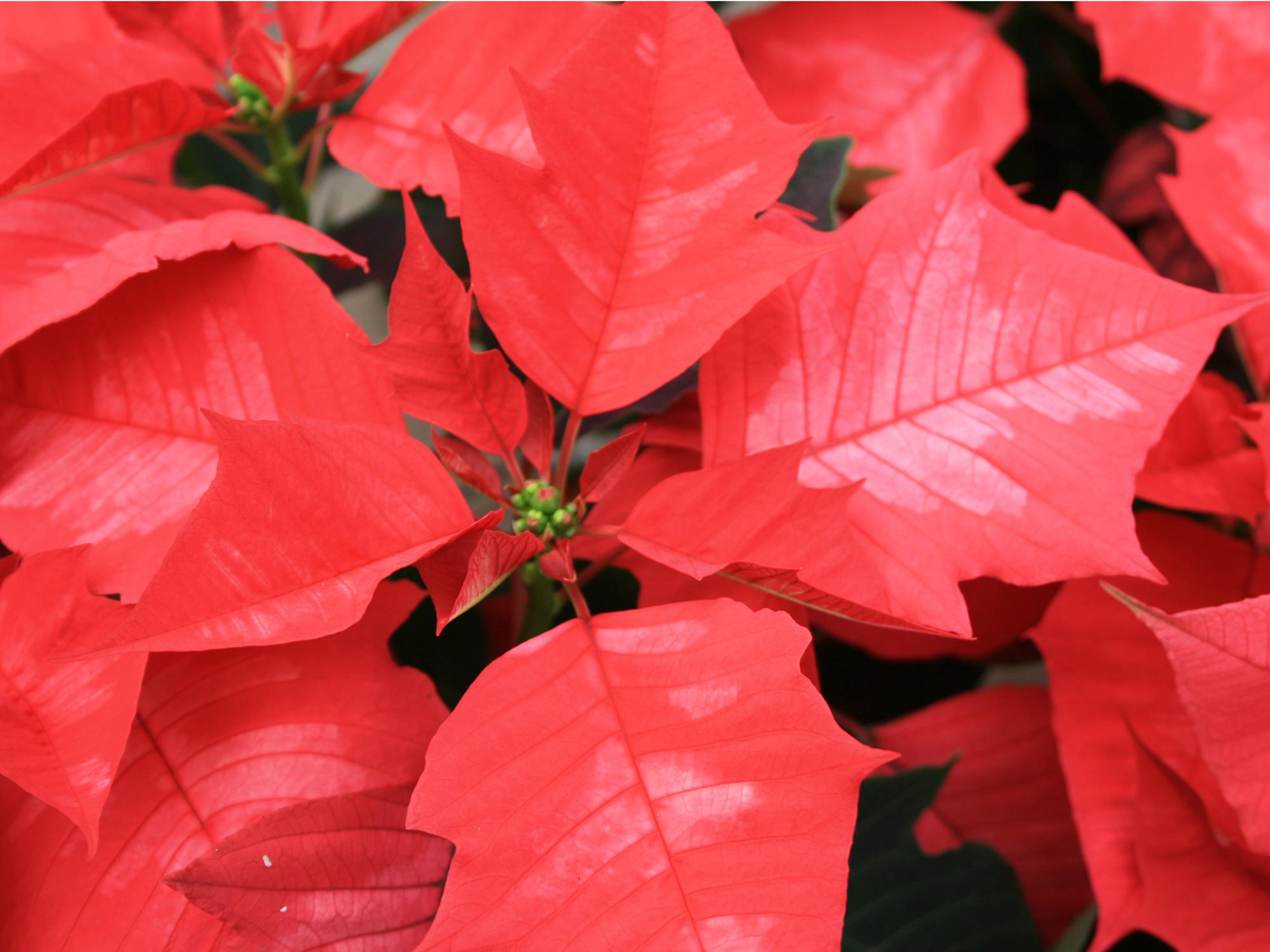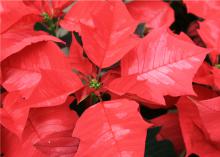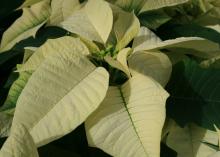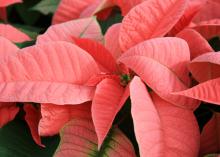Information Possibly Outdated
The information presented on this page was originally released on December 4, 2017. It may not be outdated, but please search our site for more current information. If you plan to quote or reference this information in a publication, please check with the Extension specialist or author before proceeding.
Poinsettias bring Christmas cheer and colors indoors
It seems like I’ve seen Christmas decorations in stores for at least a couple of months. They really accelerated after Halloween, completely ignoring Thanksgiving, which was when I noticed early poinsettias out in force.
Along with Black Friday, Small Business Saturday and Cyber Monday, the appearance of these poinsettias means we are in the full swing of the Christmas season.
In my opinion, the poinsettia is the quintessential Christmas plant. With its brightly colored bracts, it is a plant truly full of holiday cheer. I think most people will agree that the poinsettia is second only to the Christmas tree in essential Christmas season decor.
Poinsettias come in a truly remarkable range of colors -- no longer just the red Christmas plant. Now, we can purchase white, pink, maroon, speckled and marbled poinsettias. However, personally, I’ll take the red plants every time.
When you are poinsettia shopping, don’t be tempted to grab the first plants you see. It’s OK to take your time to find that perfect plant.
Remember that poinsettias are fragile plants, and the stems can break quite easily from mishandling. Look carefully for signs of stem and branch breakage, as these defects can be hidden by the sleeves that cover most poinsettia pots. Always tear or cut off these paper or plastic sleeves to prevent potential damage from trying to slide them off.
With proper care, you can keep your poinsettia looking good long after Christmas. Poinsettias need comfortable room temperatures and at least six hours of indirect sunlight daily. Greenhouse temperatures are about 72 degrees during the day and 60 degrees at night. The closer you can get to providing these same temperatures, the longer your poinsettia will last.
Don’t let the leaves or bracts touch the window glass. Outside cold readily transfers through the glass to harm the plant. Your poinsettia might look great by the front door when guests arrive, but it needs to avoid the sudden temperature changes from drafts as the door is opened.
The absolute most important thing to remember is, DO NOT overwater these plants. Poinsettias are sensitive to wet feet, and root rot sets in very quickly. Before you water, the potting mix should feel dry to the touch. Remove the decorative sleeve, and water the top of the container over the kitchen sink. When the water has finished draining, replace the sleeve.
Contrary to widely reported information, poinsettias are not poisonous to our pets. According to the ASPCA Animal Poison Control, eating poinsettia leaves will induce only GI tract irritation. As with all ornamentals and houseplants, the poinsettia is not meant to eaten by our pets, so keep it out of their reach.
A more likely scenario is that some individuals with sensitive skin might develop a rash or contact dermatitis when coming in contact with the milky sap. The sap is closely related to latex, so always wash your hands after handling your poinsettia.
I offer one final tip as you choose your poinsettia. Regardless of color, always choose a plant that is in proportion to its container. You can’t go wrong with a poinsettia that is about 2 1/2 times taller than the container.
So pick plenty of your favorite poinsettia colors to brighten the Christmas season, and follow these simple steps to keep them healthy and beautiful.






